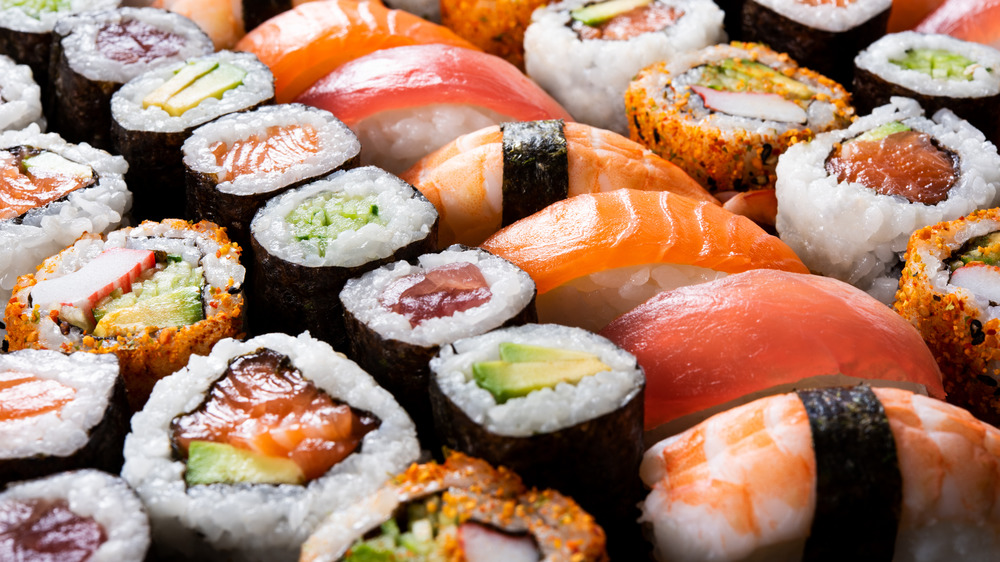When You Eat Too Much Sushi, This Is What Happens
When it comes to dining out — or more often these days, ordering in — you might consider sushi one of the healthiest options available. It sits light in your stomach and is usually made with rice, fish, and veggies, making it seem like it ticks all the boxes for a balanced meal. But as is often advised, all things should be consumed in moderation. And that includes something as generally healthy as sushi.
Sushi fans might wonder why they might need to limit sushi. After all, fish is loaded with healthy fat and the veggies added to rolls — like avocado and cucumber — are either their own sources of healthy fats or they're low-calorie and filled with fiber. It seems like the perfect meal, right?
Well, not exactly. It turns out, the fiber in the vegetables and the protein in the fish may not provide the nutrients needed to fill you up. MyFitnessPal, a widely used food tracking app, offers a clear nutritional breakdown: In California rolls, the protein and fiber are balanced out by the rice. While not entirely bad, rice is a carb-heavy food high on the glycemic index, a food ranking system that measures how foods affect your blood sugar. High GI foods cause blood sugar spikes which then lead to crashes. And as explained by the American Diabetes Association, when you crash, you get hungry again as your body is finding balance.
Mercury levels are more concerning
Too many California rolls can spike your blood sugar and pack on the calories, but they're not the only ones. Many rolls include tempura, cream cheese, or mayonnaise-based sauces. These additions are either high in unhealthy fats, calories, carbs, or sugar. Eating too much of these ingredients will have the same impact as eating too many California Rolls — or any other unhealthy food for that matter.
And other types of sushi have their own issues as well, namely mercury concentration. According to the FDA, mercury levels in fish are on the rise and some are simply not safe to eat in large quantities. These include swordfish and big eye tuna which are popular sushi choices. Consuming too much sushi of either type could cause low grade mercury poisoning with symptoms like memory trouble, tremors, and depression.
This doesn't mean you have to avoid fish, though. You just need to know the weekly recommendations. The FDA has a handy chart offering clear guidelines on safe fish consumption. The chart states one serving is four ounces (1/4 of a pound) and gives three rankings: "Best Choices" (two to three servings per week), "Good Choices" (one serving a week), and "Choices to Avoid."
If you stick to fish in the "Best Choices" category, and don't eat sushi every day, you probably don't have to worry about the added calories or mercury levels. Just keep an eye on your serving sizes so you can enjoy your sushi worry-free.


